LOGIC
The i-blueCulture work plan will be implemented based on a coherent work program, divided into carefully designed tasks that will ensure the highest self-sufficiency and coherence for the project. The overall approach and methodology proposed in the project consists of the following four interrelated phases which are complemented by the horizontal knowledge dissemination and coordination work of the project:
The first stage (Phase 1) of the project includes the definition of system and user requirements (technical and non-technical requirements), as well as the design of the main i-blueCulture system architecture. In this section:
- Users’ requirements will be recorded and defined, and usage scenarios will be described, for the implementation of i-blueCulture and its subsystems at selected pilot sites.
- The detailed requirements of i-blueCulture will be defined, as well as its functional and technical specifications.
- The system architecture will be designed containing all the subsystems, interfaces and their internal and external connections.
- The state of the art for the equipment, software libraries, wired and wireless data transmission systems, submarine equipment as well as diving techniques that will be used will be researched.
- The use cases of the system will be determined, through which the technologies brought by i-blueCulture will be evaluated based on their application in the selected pilot points.
The second stage (Phase 2) of the project includes the technical implementation of the algorithms and subsystems of i-blueCulture that will create the 3D model and the virtual view / video of the wreck, as well as the interfaces through which users will virtually tour the wreck. In this section:
- The points where the underwater cameras will be placed will be studied and selected so that they are geo-mentioned in the area, cover it completely, not disturb the antiquities and are easily maintained during the whole time that they will remain in the sea. It should also be possible to transfer their image as well as the electricity that supplies them without the respected cables being visible.
- An attempt will be made to standardize the way of analysis of each possible underwater position and to optimize the respective model and the positions of the cameras.
- Suitable cameras and cases will be selected for this use, while automated robotic systems for simple but efficient maintenance and cleaning will be developed.
- Research will be conducted to develop a low-cost underwater surveillance and intrusion detection system for the wreck’s location.
- Research will be conducted: a) to optimize the method of initial recording the submarine target based on the different conditions, in order to achieve the best possible result in the shortest time, b) in the automated design of the three-dimensional model that will be selected based on the conditions surrounding the target, the size and the peculiarities of its morphology and the preselection of the required points of visual and acoustic information, c) in the design of the geometry and number of the surfaces, from which the visual information will be collected, d) in the choice of method (human or robotic), video or photographic, degree of resolution, type and degree of artificial and natural lighting required to create the data cloud of underwater points, e) ensuring that either human or robotic means move on the above default surfaces and that the result they produce is adequate and error-free, f) the ability to process all of the information collected above within the dive boat to ensure that it is adequate.
- Advanced image processing and computational vision algorithms will be developed which will take input from the cameras placed in the marine space and produce the three-dimensional (3D) model of the wreck, and part of the surrounding environment in case it is of any interest.
- A virtual video of the current state of the monument will be created by the installed cameras.
- The user will use a smartphone or tablet as a browser and the device movements will determine the movement within the virtual environment.
- Appropriate interactive interfaces will be developed where the user can perform virtual browsing and interact with the system.
- An appropriate app will be developed (iOS and Android) which will collect the data to define the navigation, while in combination with the interfaces it will perform the virtual browsing.
In the third stage (Phase 3) of the project, the system will be completed and the final prototype will be exported according to the architectural design of the first phase. The various subsystems will be integrated into a single system, based on the system architecture and the users’ requirements.
The fourth (Phase 4) and final stage includes the installation and pilot testing of i-blueCulture at the pilot sites / monuments of the project, which are analyzed below. The pilot operation will be supported by all i-blueCulture technology partners, implementing regulatory action where required. In this section:
- The study / plan of the pilot facilities as well as their installation operation and technical support will be completed.
- Various use cases will be conducted for testing i-blueCulture, which will be determined by an Acceptance Test Plan.
- i-blueCulture will be evaluated in relation to the use cases and its specifications (functional and technical), but also in relation to the users’ requirements.
- i-blueCulture will be analyzed in order to apply the system’s methodology to other monuments.
- A thorough study for the commercial use of the i-blueCulture system will be conducted.

i-blueCulture project has been co-financed by the European Regional Development Fund of the European Union and Greek national funds through the Operational Program Competitiveness, Entrepreneurship and Innovation, under the call RESEARCH – CREATE – INNOVATE
The project started on November 2020 and will be completed on April 2023
The scientific responsible and coordinator of the project is Dr. Dimitrios Tzovaras form CERTH-ITI
Contact
-
Information Technologies Institute
Centre for Research and Technology Hellas
6th Charilaou Thermis, ZIP 57001, Thessaloniki - Dimitrios.Tzovaras@iti.gr
- +30 2311 257 701-3
